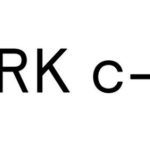It’s a tale as old as time: A brand introduces a design, it becomes a must-have among the style set, fast-fashion retailers create an uncanny replica that can arrive at customers’ houses within three to five business days and costs a fraction of the price.
If given the choice, most shoppers will go for the cheaper and quicker option, regardless of who’s offering it. But in an era where convenience is king, how do fast-fashion dupes impact the overall trajectory of a label on the rise?
This is a topic Saudia Islam, founder of JBD Apparel, thinks about often. After Kim Kardashian posted her brand’s crocheted pieces on Instagram during the summer of 2020, there was an influx of customers flocking to the site.
“The next couple of months were complete chaos, if I’m being honest,” she says. “Our entire team was working pretty much non-stop. It was amazing how we maximized our business by 500%, basically overnight.”
But Islam was unknowingly racing against the fast-fashion clock. With a small team and lead time of more than 30 days for her made-to-order products, these new customers were getting impatient. Meanwhile, larger corporations were swooping in to meet the demand, and within months, Islam started noticing her pieces (or ones that looked just like them) in the “New In” sections of popular fast-fashion sites; some went as far as reusing her images to sell their knock-offs. At the time, she took to Instagram stories to air out her grievances, but by that point, it was too far gone.
Photo: Courtesy of JBD Apparel
Emerging designers have a greater platform than ever before, and they’ll use it to speak out about not just the challenges of building a brand with longevity, but the harm these knock-offs can have on their growth.
“We live in a culture where we want what we see,” says EB Denim founder Elena Bonvicini, who recalls being “devastated” the first time one of her designs was recreated by a fast-fashion retailer. “Unfortunately, shoppers will (buy) pieces just for the look and nothing more.”
Thanks to social media and the age of infinite scrolling, there’s more visibility on fashion and the work of up-and-coming creatives. When paired with the rapid trend cycle, it leaves consumers with an insatiable appetite for more more more.

Photo: Courtesy of EB Denim
“(They) want this thing that they see their favorite influencers, celebrities and even their friends wearing, but (when) they realize they can’t afford it, they go out and find the cheapest dupe possible on the Internet,” says knitwear designer Nia Thomas.
All three designers consider their clothing to be investment pieces, and are aware of the fact that as such, they aren’t accessible to everyone.
“It’s understandable (if) people don’t have the funds to afford certain items,” Islam says. “But a lot of people are simply neglecting the physical labor it requires to make these types of garments.” This can skew customers’ understanding of how much clothing costs (or should cost): “People then start to view our clothes as not being worth what we’re charging, considering fast-fashion brands are putting out similar pieces for a fraction of the price.”
Production as a new designer is far from cheap. “Typically, when you’re getting clothes produced from a manufacturer, the more you order, the less it costs,” Islam explains. “It makes it very difficult for smaller brands to get to that next level, if you don’t have funding or an investor, especially if you want to maintain your quality and ethics.”

Photo: Courtesy of Nia Thomas
According to a detailed report by The Washington Post, most fast-fashion retailers are thriving off of cheap textile production, unethical labor practices and undesirable materials like polyester. The quality of the pieces themselves are more often than not a reflection of the shockingly low price tags: In a lot of cases, consumers would be lucky to get multiple wears out of a mass-produced item before it starts falling apart.
Mirror Palais founder and designer Marcelo Gaia talked about this at great lengths on TikTok after numerous comments questioned the brand’s prices, going as far as tagging fast-fashion conglomerates in hopes that they would make a similar style for a fraction of the price.
“Companies like Shein use exploitative labor,” he said in a video. “There are several reports on the unethical practices happening within their factories. How do you lack a sense of empathy?”
Gaia’s referring to the countless exposes from countless publications, from Time to Public Eye, which have uncovered unsettling information about labor law violations, including setting up unregulated factories in residential buildings and forcing employees to work 75-hour shifts. Another detailed report found that Shein was uploading anywhere from 2,000 to 10,000 new styles to their app, daily, between July and December of 2021 — numbers the average independent designer can’t compete with. Not that they would want to, if it meant compromising the integrity of their brand.
For a lot of emerging brands, the production process and the artisan communities they work with are a key part of their ethos. In most instances, they’re as precious as the designs themselves. But they’re also businesses, and the teams will make decisions that make the most sense, cost-wise. Thomas went as far as moving the manufacturing of her eponymous label to Mexico City, then Peru in search of more affordable raw materials.
“As much as I loved supporting the US economy and working with a generational female-led factory in Manhattan, it’s just not cost-effective,” she says. “We also don’t have access to the cellulose based fibers and raw materials that I like to use, which decompose into the Earth the same way a banana peel would.” (Today, she works with an artisan collective in Lima.)
Despite the seemingly small differences between original designs and their dupes, the details make all the difference, Thomas explains: “Some greenwashing tactics that companies are using right now is labeling anything that’s knitted or has an open weave as being crochet, but that’s not true. Crochet can only be done with two hands and one hook, so it’s not able to be mass produced. The stitches are too complex for machines to learn and to do it efficiently.” That can leave consumers wondering why her pieces are priced higher than a similar style they’d find at fast-fashion giants.
Dupes have become so ingrained in the way that people shop. In the past, buying a knock-off or counterfeit item was considered gauche or in bad faith. But they’ve since been rebranded into affordable alternatives, with countless videos and posts on social media of people sharing their finds. (The hashtag “dupe” has over three billion views on TikTok.)
Thomas says that the only thing she can do is tune out the noise. “There’s so much going on in the world that subsequently ends up in my head, and I have to block out as much of that as possible in order to keep creating the timeless, beautiful designs that my customers are coming to me for. I just wish there were more resources for smaller designers,” says Thomas. “There’s so many questions and just not enough answers. And I think that’s the most frustrating part of it all.”
For Bonvicini, encouraging customers to buy better through education is key. “Rather than buying a knock-off, I would urge shoppers to opt for a secondhand version,” she says.
The truth of the matter is, everyone’s at risk of being duped. Though it can make it more difficult for emerging brands to scale, these copycat styles aren’t a game-ender.
“I truly believe that our core customers come to us for the quality of the pieces, fit and design detail,” Bonvicini says, “which are elements that I know can’t be replicated.”
Want the latest fashion industry news first? Sign up for our daily newsletter.



